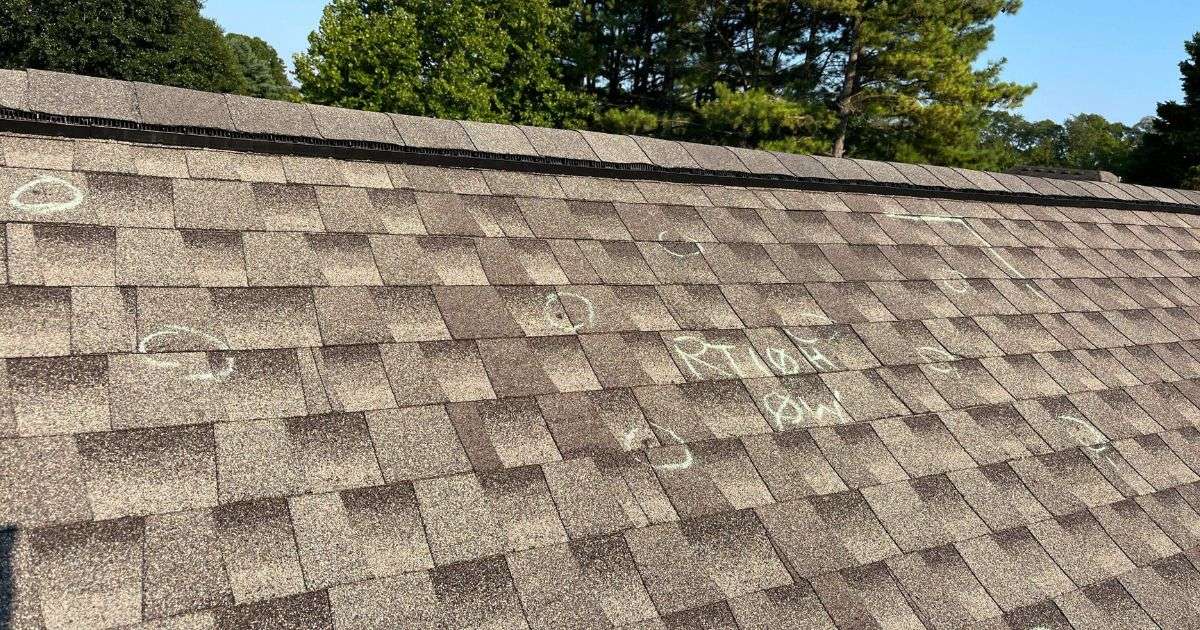Roof Repair Basics After a Storm: A Simple Guide

A storm can leave your roof damaged and vulnerable, putting your home at risk. Your roof is your home’s first line of defense, so knowing how to assess and repair storm damage quickly is key to saving time and money. This guide will help you handle roof damage after a storm, keeping your home safe and secure.
How to Assess Roof Damage After a Storm
After a storm, it’s important to check your roof for damage right away. Start by inspecting it from the ground for visible signs, such as:
- Missing, cracked, or curled shingles: These are the most obvious signs of damage.
- Dents or dings: Common after hailstorms, you may notice damaged shingles or exposed roof decking.
- Granules in gutters: If you find a lot of shingle granules, it could mean your roof has been worn down by hail or strong winds.
- Loose or displaced flashing: Check areas around chimneys, skylights, or vents where damaged flashing can cause leaks.
- Large debris: Fallen branches or other items can puncture or weaken the roof structure.
Tip: Use binoculars for a closer look at your roof without the need to climb up right away.
Not all damage is easy to spot. While missing shingles are a clear sign, other issues—like loosened shingles or small dents from hail—might not be obvious but can lead to leaks or further damage over time. Taking the time to carefully inspect your roof, or hiring a professional, can prevent bigger problems down the road.
When to Call the Professionals: Know Your Limits
While small repairs might be manageable for a handy homeowner, there’s a clear point where you need to call in a professional. Trying to handle major repairs without the right training or tools can lead to:
- Safety risks: Working on a damaged roof is dangerous.
- Poor repairs: These can cause recurring leaks and more damage.
- Voided warranties: Many warranties require repairs to be done by professionals.
Call a professional roof inspection if you’re dealing with:
- Major leaks: Especially if water has reached the attic or interior.
- Large areas of missing shingles: Covering significant parts of the roof.
- Visible structural damage: Like sagging, dips, or damage to the roof decking.
- Damage from large debris: Such as branches puncturing the roof.
- Jobs needing specialized equipment: Like safety harnesses, lifts, or thermal imaging tools.

Why hire a professional?
Experts can spot hidden problems, like structural damage or issues with the underlayment, that aren’t obvious at first glance. Their detailed evaluations are also important for insurance claims, as they carry more weight with adjusters. Plus, professionals ensure repairs follow local building codes, last longer, and extend your roof’s lifespan—giving you peace of mind.
Prevent Future Roof Damage with High-Quality Materials
The best way to protect your roof is to invest in durable, weather-resistant roofing materials from the start. While the upfront costs may be higher, the long-term savings from fewer repairs and a longer roof lifespan are worth it.
Materials to Consider:
- Impact-Resistant Shingles: Built to handle hail and debris impacts better than standard shingles.
- Weather-Resistant Underlayment: Adds an extra layer of protection under shingles to prevent water damage.
- Sturdy Flashing: High-quality metal flashing around chimneys, roof vents, and skylights helps keep water out.
- Strong Sealants: Adhesives and sealants that withstand extreme weather and moisture.
- Roof Coatings: Provide added waterproofing and UV protection.
Climate-Specific Tips:
- Cold Climates: Use ice and water shield membranes and consider heat cables to stop ice dams.
- High-Wind Zones: Choose shingles with high wind ratings and ensure proper installation.
- Hail-Prone Areas: Impact-resistant shingles are essential.
Don’t forget insulation! Proper attic insulation protects your roof from temperature extremes and can improve energy efficiency. By choosing durable materials and maintaining your roof, you’re not just fixing problems—you’re protecting your home from future damage.

Navigating Insurance Claims for Roof Damage
After a storm, dealing with roof damage often means filing an insurance claim. Knowing your policy and following the right steps can help you get the coverage you deserve.
Steps to Take:
- Document All Damage: Take detailed photos and videos of damage from multiple angles, including roof leaks or interior issues. This visual evidence is crucial for your claim.
- Review Your Policy: Understand what’s covered, including your deductible, depreciation clauses, and deadlines. Watch for exclusions or “Acts of God” clauses.
- Contact Your Insurer Quickly: Report the damage as soon as possible to avoid complications.
- Get a Professional Assessment: A detailed report from a trusted roofing contractor can help support your claim.
- Keep Records: Log every phone call, email, and document related to the claim, including receipts and estimates for repair work.
- Be Ready to Negotiate: If your adjuster undervalues the claim, use your documentation and contractor reports to challenge it.
- Ask About Reimbursements: Check if expenses for temporary repairs or alternative housing are covered.
Filing an insurance claim can feel overwhelming, but being organized and proactive will help ensure a smoother process and fair outcome.
Roof Repair Basics: Securing Your Roof
Dealing with roof damage after a storm can be stressful and overwhelming, but it doesn’t have to be if you follow a clear plan. Start by carefully assessing the extent of the damage—look for missing shingles, cracks, leaks, or debris that might have caused structural issues. Determine whether minor problems, such as replacing a few shingles, can be tackled on your own with the right tools and materials, or if more significant damage requires professional help from a licensed roofing contractor.
When repairing your roof, it’s essential to invest in high-quality materials that can withstand future storms and minimize the likelihood of recurring issues. Consider upgrades like impact-resistant shingles or improved sealing to enhance durability. Additionally, taking photos of the damage and documenting all necessary repairs will make navigating the insurance claim process much easier and help ensure you receive proper compensation.
By staying proactive and organized, your roof can recover stronger than before, providing long-term resilience and peace of mind. With the right repairs and materials, you’ll keep your home safe, secure, and ready to weather any future storms.

